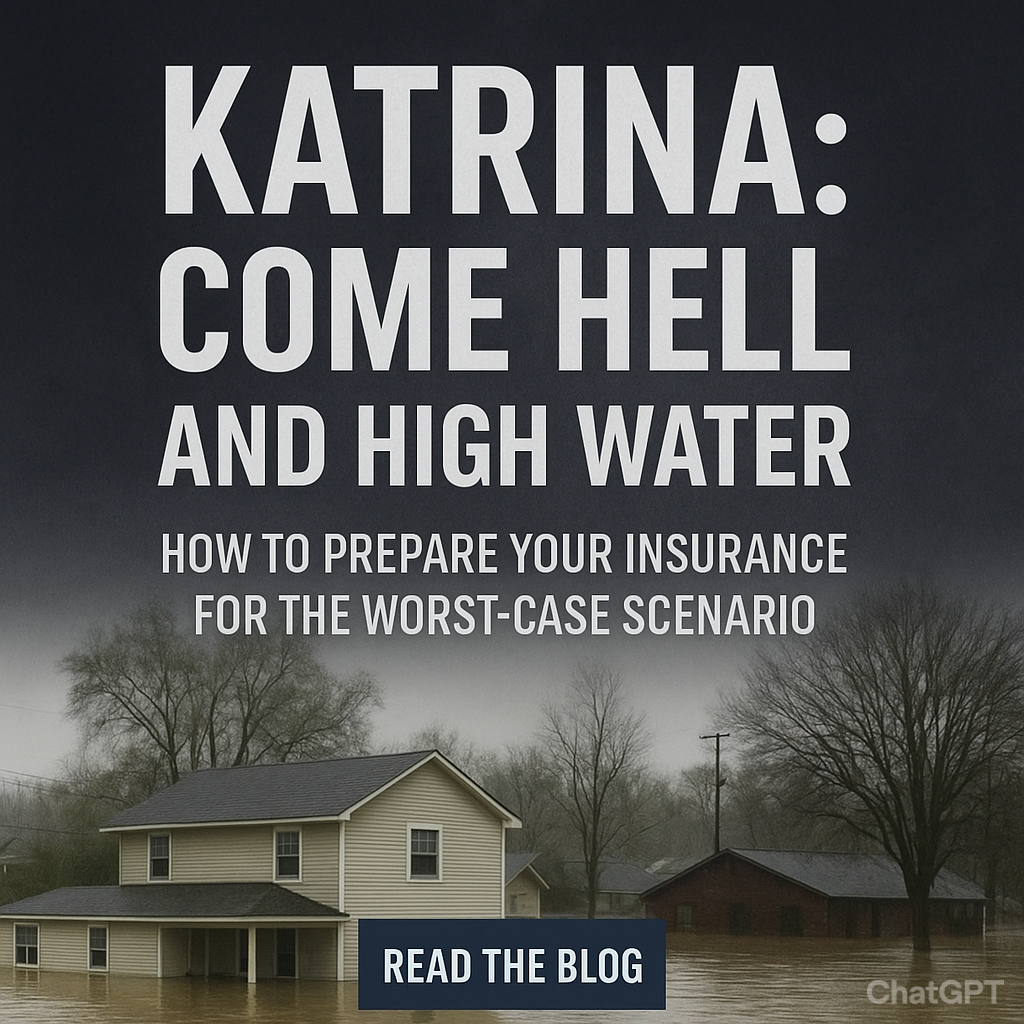Netflix’s Katrina: Come Hell and High Water is a sobering reminder of what happens when disaster collides with unpreparedness. Beyond the human tragedy, one of the most devastating aspects of Hurricane Katrina was how many families discovered—too late—that their insurance coverage was nowhere near enough. Homes were swept away, yet the checks that came didn’t cover rebuilding. Entire neighborhoods, like New Orleans’ Lower Ninth Ward, were left with nothing.
The takeaway? Catastrophes can happen anywhere. Even if you don’t live on the Gulf Coast, disasters like wildfires, earthquakes, and floods can strike unexpectedly. The best way to protect your family’s financial future is to make sure your insurance policies are designed for the worst-case scenario, not just everyday risks.
Lessons from Katrina
-
Market Value vs. Replacement Cost
After Katrina, many homeowners were shocked to learn their policies only paid based on their home’s market value, not what it would cost to rebuild. Market value is often much lower, especially in older or lower-income areas. The result? Insufficient funds to rebuild or even repair.What to do: Make sure your homeowners policy is based on replacement cost, not actual cash value.
-
Flood Damage Is Not Covered by Standard Homeowners Insurance
The biggest heartbreak of Katrina was that thousands of families thought they were insured, but their homeowners policies did not cover flood damage. Without a separate flood policy, they were left on their own.What to do: Even if you’re not in a high-risk flood zone, consider flood insurance. Heavy rains, overflowing storm drains, or a sudden burst pipe can cause catastrophic water damage.
-
Disasters Cause Costs to Spike
After Katrina, the cost of building materials and labor skyrocketed because so many homes needed repairs at the same time. Policies with strict limits couldn’t keep up.What to do: Look for policies with extended replacement cost or guaranteed replacement cost coverage. These provide an extra cushion if rebuilding costs surge after a widespread disaster.
-
Ordinance or Law Coverage Matters
When rebuilding, homeowners had to comply with newer, stricter building codes—sometimes costing tens of thousands more than expected. Many weren’t covered.What to do: Add ordinance or law coverage so that code-required upgrades don’t come out of your pocket.
-
Earthquakes, Fires, and Other Risks
In California, it’s not hurricanes we fear most, but earthquakes and wildfires. Standard policies exclude earthquakes and have limitations on wildfire risk in high-hazard areas.What to do:
-
Add earthquake insurance (offered through the California Earthquake Authority or private carriers).
-
Confirm wildfire is covered under your homeowners policy, and if you’re in a high-risk area, know about backup options like the California FAIR Plan.
-
How to Protect Your Family Today
Here’s a quick insurance checklist:
-
✅ Homeowners insurance with replacement cost coverage
-
✅ Extended or guaranteed replacement cost rider
-
✅ Ordinance or law coverage
-
✅ Flood insurance (separate policy)
-
✅ Earthquake insurance (if you live in California)
-
✅ Review coverage amounts every 1–2 years to keep up with rising construction costs
Final Thought
Katrina: Come Hell and High Water is more than a documentary—it’s a warning. None of the families in New Orleans expected to lose everything, and many never recovered financially because their insurance was inadequate.
Don’t wait for disaster to reveal the gaps in your coverage. Take time now to review your policies and make sure your insurance will stand up to the worst-case scenario. Protecting your home is protecting your family’s financial future.

Comments +